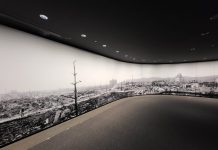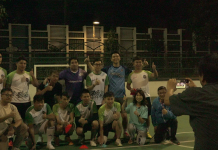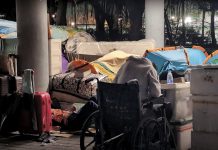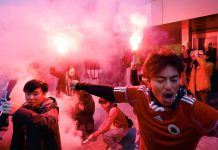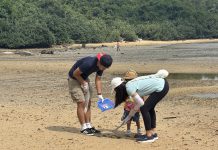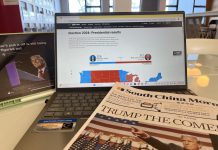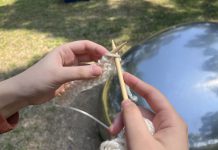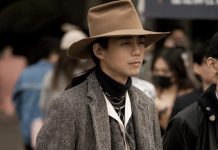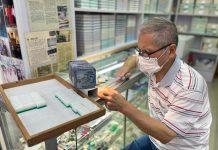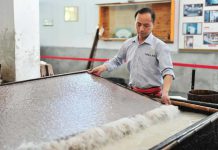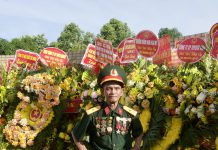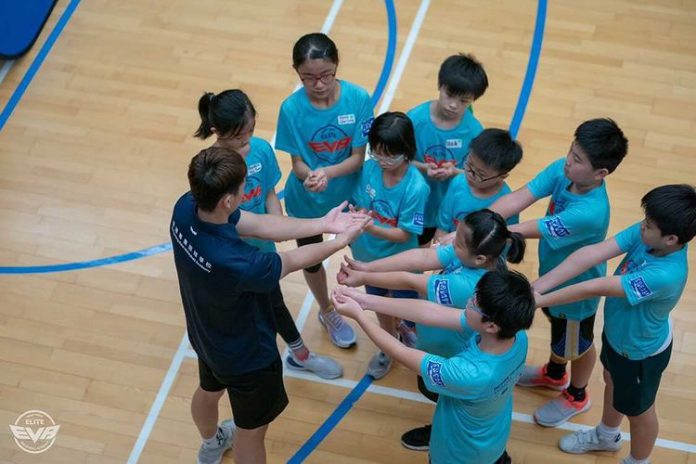
Fitness industry has been suffering from COVID-19 and the financial situation of practitioners is still hanging in the balance even after the reopening policy.
By Felicia Lam
Jason Tang Chun-man, owner of Jason Fitness has mixed feelings about his centre’s operation as the fight against COVID-19 in Hong Kong is threatened by a rapidly ballooning outbreak at a gym.

owner of Jason Fitness
(Photo courtesy of
Jason Tang Chun-man)
According to the Centre for Health Protection, there are already 122 cases related to the cluster outbreak in Ursus Fitness in Sai Ying Pun as of March 15. It is now the second-largest cluster outbreak in Hong Kong.
Gyms across the city were closed for months due to COVID-19 restrictions. The government announced on February 10, 2021 that fitness centres would be allowed to reopen on February 18. All staff members have to do a COVID-19 test every 14 days and all gym centres are required to install ventilation facilities inside their venues.
Having reopened for only a month, Tang’s operation, which offers fitness and Muay Thai classes, is heavily impacted by the Ursus Fitness cluster outbreak.
“A lot of our students have cancelled their bookings or stop having classes in our centre. There are around 30 to 40 per cent fewer students in our centre now,” he says.
“But I do not think that I am unlucky. Things are no longer under my control, so there is nothing that I can do now,” he adds.
Tang says that he felt helpless and frustrated in the past few months when his centre was closed.
“I used my savings to pay rent for my fitness centre and mortgage for my flat. I have to take care of my jobless wife and my parents. I need HK $60,000 to HK $70,000 a month for all these expenses,” says Tang, who has worked as a full-time coach for seven years.

(Photo courtesy of Jason Tang Chun-man)
Fitness centres were closed as one of the government’s measures to reduce infection risk during the pandemic. Tang gained zero income from his centre since he had to close it and cancel all his classes.
Tang has organized “takeaway classes” at parks near students’ homes, trying to earn some extra money. “I made HK $10,000 a month from these classes, but that only translates to one-tenth of my original income,” he says.
He stopped holding “takeaway classes” after the reopening of his centre and focuses on operating his fitness centre.
Problems Caused by the Regulation on Venues
Siu Cheong-hung, founder and volleyball coach of Hong Kong Elite Volleyball Academy (HKEVA), shares Tang’s worries. He is also not sure if his academy can operate to its full capacity.

(Photo courtesy of Siu Cheong-hung)
The government announced the Leisure and Cultural Service Department (LCSD) indoor sports venues would be reopened on February 18, 2021.
“A majority of our classes are using LCSD venues. We are still working on booking these venues. We hope that about 70 to 80 per cent of our classes will resume in March,” he says.
“Our coaches and I are very happy about the reopening of LCSD venues. This makes us feel hopeful and we have regained our motivation to work hard,” he adds.
But Siu is still uncertain whether secondary and primary schools will reopen their venues for volleyball training.
“I have lost my main source of income as a volleyball coach during the pandemic. I need to take up jobs like working as a private coach or a substitute teacher in secondary and primary schools,” says Siu, who organises volleyball class for schools and adults.
His monthly income dropped from HK $50,000 before the pandemic to HK $20,000 on average. He adds that the income he earns from his other jobs is not stable.
Indoor volleyball courts in Hong Kong were closed down for about eight months in 2020. Almost all volleyball classes organised by HKEVA were cancelled during the pandemic.
“We are not like tutorial classes which can be operated in a small room. We need a venue that is big enough to practice volleyball techniques. We were forced to stop when all venues that could be used for our classes were closed,” he says.
Industry’s Voice Unheard
Yeung Chi-yin, a member of the Hong Kong Fitness and Combat Sports Alliance, says that the alliance members are disappointed with the government’s lack of assistance to gym centres when they were closed.
The alliance represents small to middle size gyms and fitness schools in Hong Kong with 28 core members. They were formed in March 2020 after the government’s orders to close all fitness centres and gyms as a preventive measure.

(Photo courtesy of Yeung Chi-yin)
They had a meeting with Home Affairs Bureau officials regarding the closure order. “But the officials did not accept our views…and they did not listen to us at all,” says Yeung, who owns a fitness school called Gymer Factory.
Yeung knows that other labour unions representing the fitness industry and chain stores have sought help from pro-government parties, such as the Liberal Party and lawmaker Ma Fung-kwok, representing Sport, Performing Arts, Culture, and Publication functional constituency.
“No matter who helps us voice out our needs, whether they are pan-democratic councillors or pro-establishment party members, the government just ignores all our concerns,” Yeung says.

“If the government’s measures are ineffective in preventing the outbreak, no matter how self-disciplined we are in following the government’s rules, the pandemic will not end,” he adds.
The Government’s Flaws in its Decisions
Shun Lee Yue-shun, district councillor of Kam Ping in the Eastern District, has been helping the fitness industry by organizing press conferences and meetings with officials since March 2020.
Lee thinks that the loophole of the government’s preventive measures is the lack of border control.
He knows that the number of centres applying to the government Anti-Epidemic Fund in September 2020 dropped by 400 to 1660 compared to April 2020.

The district councillor criticised the government for having a poor understanding of the fitness industry.
“The one-off HK $50,000 cash handout for us as compensation to business loss during the peak season in summer is obviously not enough,” Lee says.
“Matthew Cheung Kin-chung, the chief secretary, uses the term ‘symbolic subsidy’ to describe the Anti-epidemic Fund for all industries. But different industries are facing various difficulties,” he adds.
Edited by Laurissa Liu
Sub-edited by Agnes Lam







